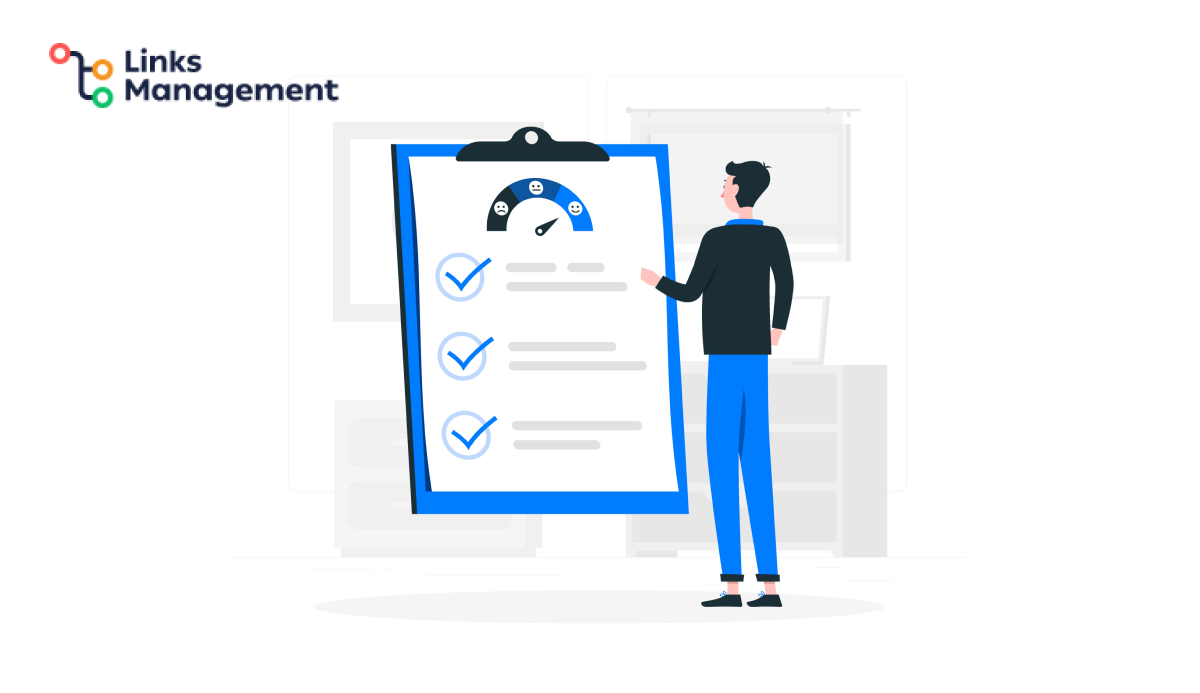How to Check Google Rankings: 3 Fast & Accurate Ways
What stands behind Google’s ranking? There’s a complex algorithm with components like user experience, consent quality, content relevance, and backlinks at its core. It has been proven that moving up from the third page to the first one in Google search results augments the chance of a target audience to identify a website and click on it.

An effective way to find out where you stand on Google is constant monitoring. Your position will help you understand the effectiveness of your team’s work and their SEO efforts. But how to check Google ranking?
In this article, we’ll tell you about the three fastest and most accurate ways to do it and share insight on how to improve your position afterward. Join us!
Top 3 Ways to Check Your Website Ranking on Google
Google Search Console
The most straightforward answer to how to check website ranking on Google search is to entrust the whole work to Google itself by using Google Search Console. The instrument is 100% free to anyone running a website, and all the data there comes straight from the search engine operated by Google. The Console is favored for providing exhaustive information and helps to discover what typically holds back a website’s search performance.
To work with the Console, you need to:
- Set it up via your Google account.
- Verify your webpage.
- Go to the Performance Report Dashboard and check the data for your web page.
- Go to the CTR, Impressions, and Average Position statuses based on the provided data.
Looks as simple as that. Yet, Google Search Console offers different filtering options to allow users to see how their websites rank for any specific search term. In the Search Console, you can filter by:
- Keyword. For this, you need to go to the Performance dashboard and choose the Queries tab. There you’ll see the full list of keywords that your web page ranks for. The list you see is arranged depending on the number of clicks received by keywords. If you are keen to learn more about the ranking position for a particular keyword, you can simply click on it. Or you can go to the Filter menu and create a filter for an exact keyword. By default, Google Search Console will only show you ranking results for the last three months. But this can be changed to your preferences.
- Page. After you decide on the exact page of your website that you want to check, go to the Google Search Console and click on the Page tab. In the table that opens, you will find all the pages classified by the number of clicks they get. Go to a specific page and click on it to check it individually.
- Keyword group. This option is useful for those who’d like to find out how their websites rank for terms with a specific phrase or word in them. To filter by a keyword group, go to the filter field, press on the +New button and choose Query. In the box that appears, add the term that interests you and choose to search for all keywords with this term or all keywords without this term.
The high accuracy of Google Search Console makes it the number one instrument for checking your website ranking. What’s more, the instrument by Google allows users to perform data comparisons from previous results to make sure their new SEO efforts work (or don’t).

SEMrush
SEMrush allows users to track their websites’ positions and receive reports on the progress of their search marketing campaign. Unlike Google Search Console, the instrument is not 100% free, but even with a free account, a user can monitor keyword rankings on Google, though with some limitations.
To work with SEMrush, you need to:
- Set up the instrument.
- Go to the Position Tracking field.
- See specific keywords or pages.
- Filter the list according to SERP.
- See what keywords or pages are productive.
Let’s have a bit more in-depth look. To use SEMrush, users need to enter their website’s URL alongside up to 10 terms they would like to start tracking. The instrument then delivers information on keyword positions and their visibility, keyword difficulty, and search volume. SEMrush can track performance across devices and locations, which gives a better understanding of your business’ performance.
SEMrush is effective in identifying organic opportunities for growth, analyzing the closest competitors, their rankings, pages, and keywords, as well as tracking backlinks. In the Project section, users have access to an all-embracing analysis of a website’s position, including authority score, referring domains, organic keywords, etc.
To make it more convenient for users, SEMrush allows setting up email notifications for website owners to receive emails on their positions. This saves much time on manual checks.
Ahrefs
Ahrefs is one of the most powerful tools in the SEO industry that helps users follow and investigate their websites’ performance in SE rankings. There are four core directions that the instrument helps with how to stay ahead of competitors, how to detect optimization opportunities, how to measure SEO strategy effectiveness, and how to understand user behavior. In terms of feature sets, Ahrefs is similar to SEMrush: it has an extended range of feature sets and instruments to help businesses stay on top of their search engine rankings.
To work with Ahrefs, you need to:
- Set up the instrument.
- Find Rank Tracker on the dashboard and go to it.
- Find the graphs displayed.
- Monitor SERP features and Average Position.
- Search for keywords ranking for your web page.
With Ahrefs, all you need to do is choose the target country and input the keywords you’d like to analyze. After you click on Check Rankings, the instrument displays the list of top ten search results for a chosen keyword. Everything is done within seconds rather than even minutes, which allows users to track multiple keywords and their indicators at once. This is available if you have a free count.

Of course, a premium version of the Ahrefs account allows you to go deeper into your research and automate the process of monitoring. For instance, if you go with their Lite plan, you can track around 750 keywords and make use of the following features: Position, Change, Volume, Keyword Difficulty (KD), and SERP features:
- Position stands for your website’s current ranking for a specific keyword.
- Change stands for any position alterations since the previous 24 hours.
- Volume shows the number of times a specific keyword was searched on Google over the past 3 days.
- KD estimates how difficult it may be to rank for a specific keyword, considering the number of referring domains as well as their strength.
- SERP features are a display of top search features exhibited for your specific keyword: images, graphs, snippets, etc.
Additionally, the platform has a feature called Site Explorer, which delivers the most valuable and helpful insights, helping business owners analyze their web page performance. For example, you can go to Site Explorer and investigate which of the pages has the largest number of backlinks, or you can analyze the keyword ranking and organic traffic of any website.

Ahrefs is the best tool when it comes to literally spying on your competitors, their keywords, backlinks, and SEO/content strategies. For this reason and many others, Ahrefs is trusted not only by individual business owners but also by SEO professionals. The latest surveys say the instrument gained huge popularity among link-building experts. And though these additional features are pricey, they are worth the cost.
How to Improve Your Website Performance in Google?
Now that you know how to find out where you rank on Google, you need to do more work to improve your website performance, based on research data and competitor analysis. For this, you can follow the following best practices.
- Use Ahrefs, SEMrush, or any other SEO tool to explore new opportunities.
Start with creating a list of seed keywords, as this is the number one step in choosing what keywords you need to target. Then decide on your primer key to target for a new or updated piece of content. And do not forget about identifying secondary keywords, which are typically closely related to your primary term. Secondary keywords are subtopics, synonyms, and long-tail term variations. But don’t overdo it. Normally, one primary and three secondary keywords are enough for a 500-word product page, one primary and four secondary keywords – for a 600-word service page, and one primary and six secondary keywords – for a 900-word tutorial.
- Create more high-quality content
Before writing, decide on the search intent, which falls into four core categories: navigational is for users who are looking for a specific page, informational is for users who want to learn more about a certain topic (how-tos), commercial is for those doing research (best, top), and transactional for an audience ready to make an action (buy, get). Whatever the category is, your content must be original, helpful, written for people and by people.
- Introduce the best on-page SEO practices
Make sure your texts and pages have the following elements: title tags, meta-descriptions, target keywords in URLs, H1, and subheadings (H2-H6), Alt tags to tell Google more about the images, internal and external links, and schema.
- Enhance your technical SEO
These are the most common technical SEO issues that may affect how your website ranks on Google: broken pages that don’t exist anymore, redirect issues (redirects either don’t work properly or are falsely implemented), bad user experience due to slow page speed or poor design, and duplicate content.
- Figure out your off-page strategy
These are the tactics your team implements outside your web page to enhance the overall rankings. The best example of an off-page strategy is backlinks, of course.
And finally, keep constantly monitoring your website ranking and performance to adjust your next strategies accordingly.
Conclusion
What you need to understand is that tracking Google rankings isn’t about numbers, it’s all about insights. The more insights and valuable data you receive after analyzing your own website and those of your competitors, the higher the chances for your next SEO strategy to be more successful. Make use of SEMrush, Ahrefs, and Google Search Console as the top tools to dive deep into the factors that influence your ranking. Allow them to help you interpret the given data with precision, and then you’ll learn how to adapt to Google algorithms for further improvement.
Enter URL & See What We Can Do Submit the form to get a detailed report, based on the comprehensive seo analysis.





